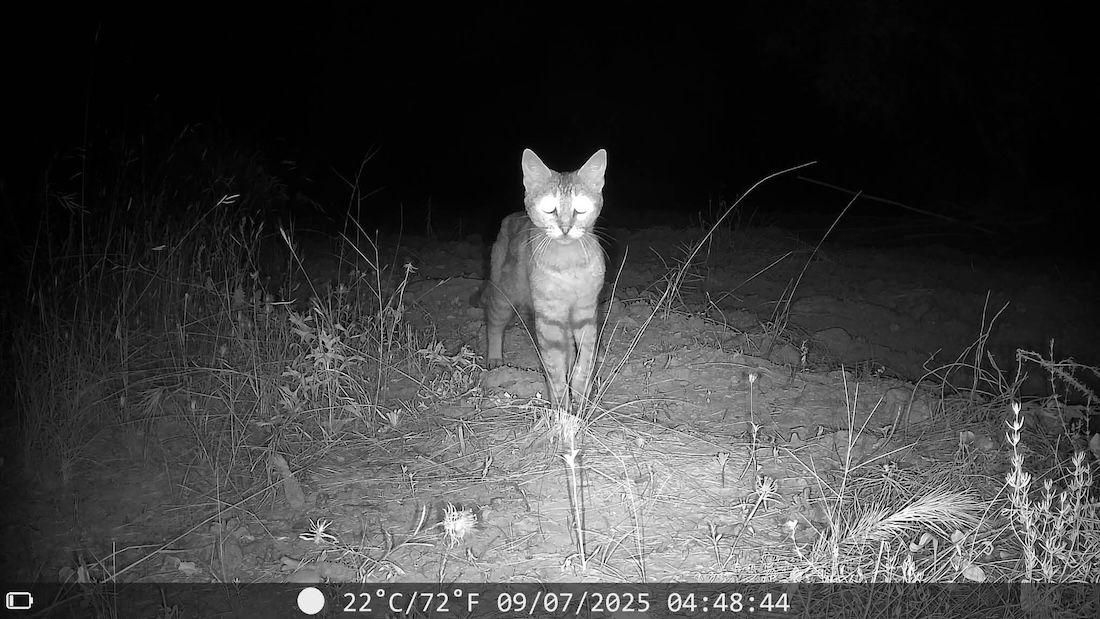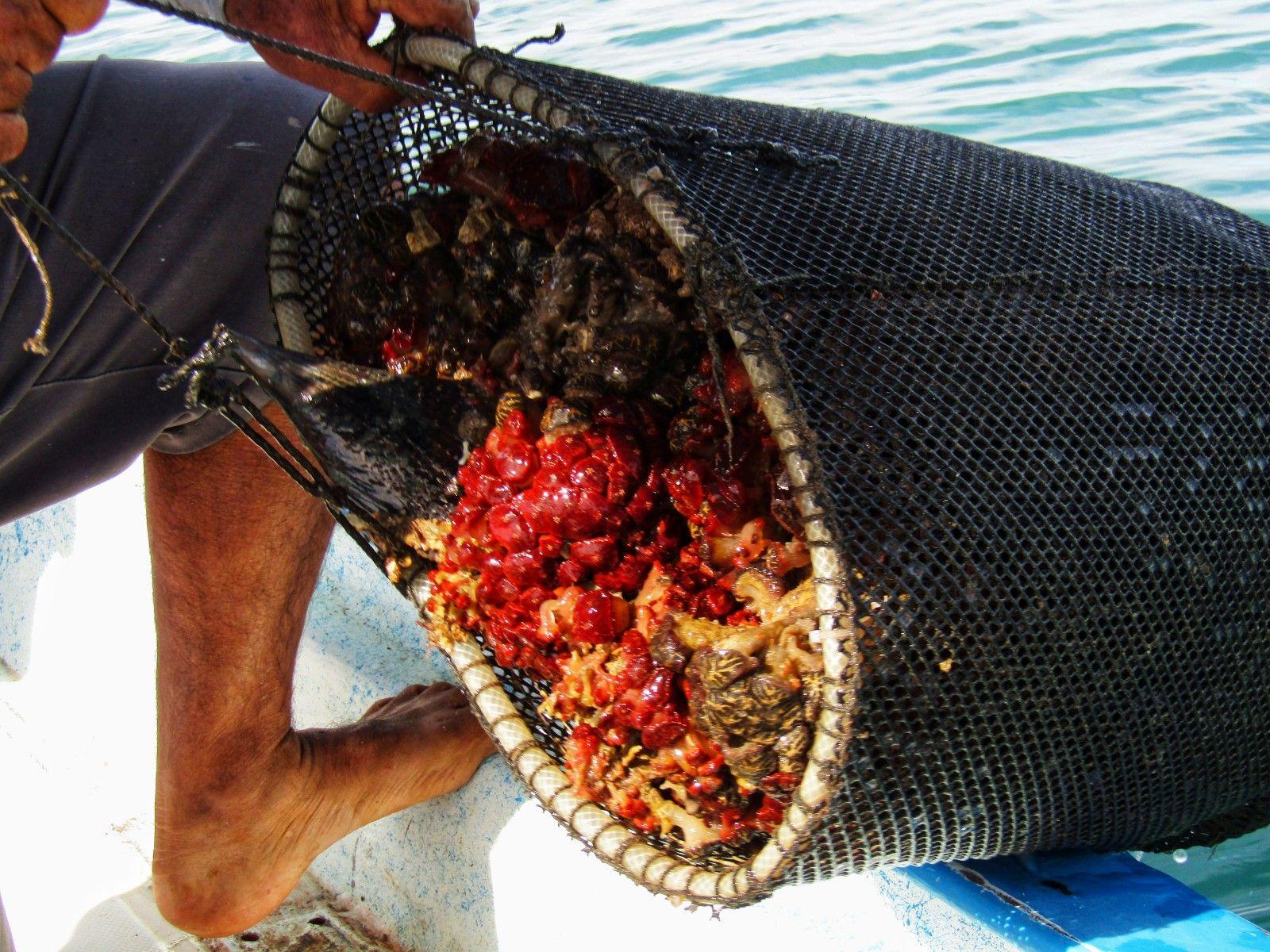For the first time in 12 years, members of the Telchac Puerto Turtle Club have found turtles killed by cats while monitoring a 22-kilometer stretch of coastline. This is a phenomenon parallel to the growth of urban sprawl.
“It was a surprise because in our experience we had not documented cats in the area. We usually monitor from Puerto de Abrigo to Uaymitún, on the north coast, and yes, there are already more and more houses on the coast. We identify that they are domestic cats because they have collars or we see them entering or leaving the houses,” said biologist Minerva Cano, a member of this group.
 Baby turtles attacked. Source: Telchac Puerto Turtle Club.
Baby turtles attacked. Source: Telchac Puerto Turtle Club.
To check which predator it was, the group set up three camera traps. Nocturnal images captured domestic cats.
“We began to review the issue and in just an eight-kilometer stretch we identified at least five cats that roam the area. In one of those, we had to see someone who had little turtles in his mouth,” he described.
In the current nesting season, at least 30 bodies of attacked offspring have been found, although they do not rule out that there are more cases.
On the other hand, they have identified 20 domestic felines across the 22 kilometers monitored, in addition to dozens of others that are of the feral type.
The concern of those who monitor turtle nests is that this becomes a threat that is added to the presence of feral dogs or birds that feed on the young.
Suemy Pool, a member of the Telchac Puerto Turtle Club, commented that they had previously dealt with feral dog attacks.
“There are natural predators, such as the wild fox that lives here, but the pressure increases if there are dogs or cats on the beach. This season we noticed that the increase in threats to turtles is terrible because there are also people who pass by on their motorcycles, ATVs or bicycles, even if it is a nesting area,” he said.
 Turtles suffer from a variety of threats, one of which is human impact. Source: Telchac Puerto Turtle Club.
Turtles suffer from a variety of threats, one of which is human impact. Source: Telchac Puerto Turtle Club.
Suemy described that all the work they do is voluntary and that people of all ages participate, from 17 to 61 years old, who act as guardians of the turtles during the nesting season.
According to data from Pronatura Yucatán, the species that nest in the state are hawksbill (Eretmochelys imbricata), white turtles (Chelonia mydas), caguama (Caretta caretta) and leatherback (Dermochelys coriacea).
“Sea turtles face a lot of problems because, for example, due to erosion or the construction of buildings in the area there are spots where there is no longer a beach. The poor come out of the sea and a meter away they already have a wall,” he said.
In this regard, Job Damián Pérez, secretary of the environmental association Vida en Verde, pointed out that the presence of cats in areas of ecological importance already represents a problem worldwide.
“The fact that they are beautiful makes people defend them, but they are a very high risk to wildlife because they cause imbalance, in this case with turtles, because not only are they killing turtles, but they are also polluting the ecosystem with diseases through their feces and urine,” he described.
Areas with the highest urban growth
So far, they have observed that the highest points of urban growth are on the north coast, between Telchac Puerto and Progreso, where beaches such as Chicxulub Puerto, Uaymitún and San Bruno are located. In this strip, they detect that, in 2025, there are at least five new condominiums under construction.
 New buildings every time in the Telchac Puerto area. Source: Itzel Chan.
New buildings every time in the Telchac Puerto area. Source: Itzel Chan.
In relation to this situation, Cano recalled that, in the past few days, one night they had the urge to remove a live stranded sea turtle from the beach to transfer it to the nearest care center. However, on a three-kilometer route, they did not find a single public entrance to the beach. In the end, the effort was in vain: the turtle died.
“This is just one example of what is happening across the country: beaches with more urban growth and accesses that, by right, belong to everyone, become private. Where so-called economic development does not mean social, community or environmental development,” he said.
 Less access to Yucatecan beaches. Source: Telchac Puerto Turtle Club.
Less access to Yucatecan beaches. Source: Telchac Puerto Turtle Club.
Solution actions
Members of the Telchac Puerto Turtle Club have focused their efforts on visiting people who have cats and offering them short awareness talks about why their pets should not walk loose.
They also carry out environmental education actions to invite people to sterilize their pets and not leave cat food in the beach area.
“Sterilization is ideal and the control of colonies in a humane way, because the fact that they are outside also alters food chains, in the sense that they eat turtles and their predators, such as reptiles and birds,” said biologist Minerva Cano.
Job Damián agrees that sterilization is an important step, along with the control of colonies.
“In this case, to help turtles, because they are indispensable species; for example, they control the presence of jellyfish. It has happened to us many times that we go to a beach and the sea is full of jellyfish, and this is because turtles are needed,” he added.
*This article was written by Itzel Chan, who covers coastal communities thanks to the support of the Report for the World program.




Comentarios (0)